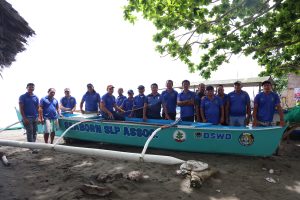Formerly tasked with guarding coastal waters against illegal fishing, a committed group of Bantay-Dagat volunteers has now embraced a new purpose — and their initial endeavor has delivered remarkable results. Now officially operating as the Seaborn Sustainable Livelihood Program (SLP) Association, these former marine life protectors are celebrating a successful entry into aquaculture, marked by a plentiful first harvest of tons of milkfish from their Milkfish Production in Cage livelihood project.
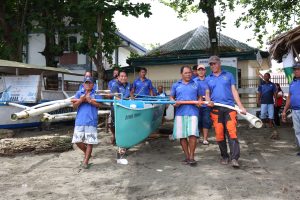
Established in late September 2024, the association is officially composed of 15 fisherfolk from various barangays of Buenavista, Agusan del Norte. With a livelihood grant of PHP 300,000.00 awarded by the program, the group was able to acquire their own pump boat, construct a floating cottage to serve as a stockhouse for milkfish feeds, and establish a strategically located milkfish cage well off the town’s shores.
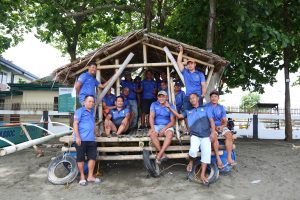
“Before, we were just protecting the fish — now, we’re raising them ourselves and earning a decent livelihood from it. It’s a big shift, but one that’s truly rewarding,” said Seaborn SLPA President Rodrigo Bercasio, a Bantay-Dagat volunteer turned aquaculture practitioner.

After months of hard work and anticipation, the association finally reaped the rewards of their dedication in April 2025.
They were able to harvest 3.4 tons of milkfish, generating a total gross income of PHP 512,610.00. The harvest was sold to a local entrepreneur, who plans to distribute the products to neighboring towns and expand their reach to larger markets.
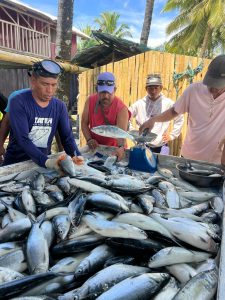
“We could hardly believe it ourselves. It took a lot of hard work, but witnessing the results made every effort worthwhile,” remarked Association Treasurer Emmanuel Tampus.
The outcome exceeded everyone’s expectations. Their first harvest not only met but surpassed projections, marking a milestone in their journey from sea patrol to competitive producers.
The success of their inaugural harvest is the result of collaborative efforts among the program and its key partners, including the Bureau of Fisheries and Aquatic Resources (BFAR), the local government unit of Buenavista, and the Municipal Agriculture Office (MAO). Each partner played a pivotal role, providing crucial support that directly contributed to the association’s record-setting achievement — from helping them establish the fish cage to providing training and resources.
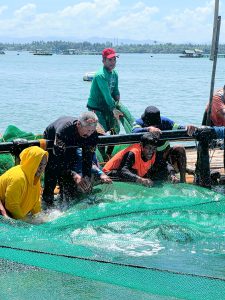
The MAO organized practical, hands-on training focused on milkfish cultivation, equipping members with valuable skills. Additionally, BFAR provided expert guidance in aquaculture practices and essential resources, including a generous provision of 219 sacks of grower feeds, which significantly supported the group’s operations and fostered sustainable growth.
“We sincerely thank the key organizations that provided essential interventions and support, which have profoundly impacted our association,” Bercasio said in an interview.
“It all began when LGU Buenavista and the Municipal Agriculture Office recommended us to the DSWD-SLP, and from there, everything started to fall into place,” he added.
Looking ahead, the Seaborn SLP Association is filled with optimism as they build on their early success. With plans to expand their aquaculture operations, the group is working toward adding another fish cage, which will further increase production and income. This expansion will not only enhance their capacity to supply milkfish to a growing market, but also create additional opportunities for community development.
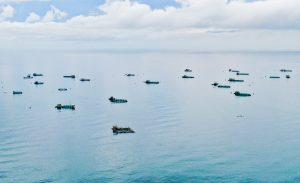
“We’re not just focused on growing our business — we want to help our community grow with us, creating opportunities that benefit everyone,” Bercasio stated.
The association is committed to sustainability, innovation, and nurturing the next generation of aquaculture practitioners — ensuring their work positively impacts not only their livelihoods but also the future of their community. With determination and the continued support of DSWD-SLP and its program partners, the Seaborn SLPA is set to thrive, expanding their business and making an even greater contribution to the local economy in the years to come.
